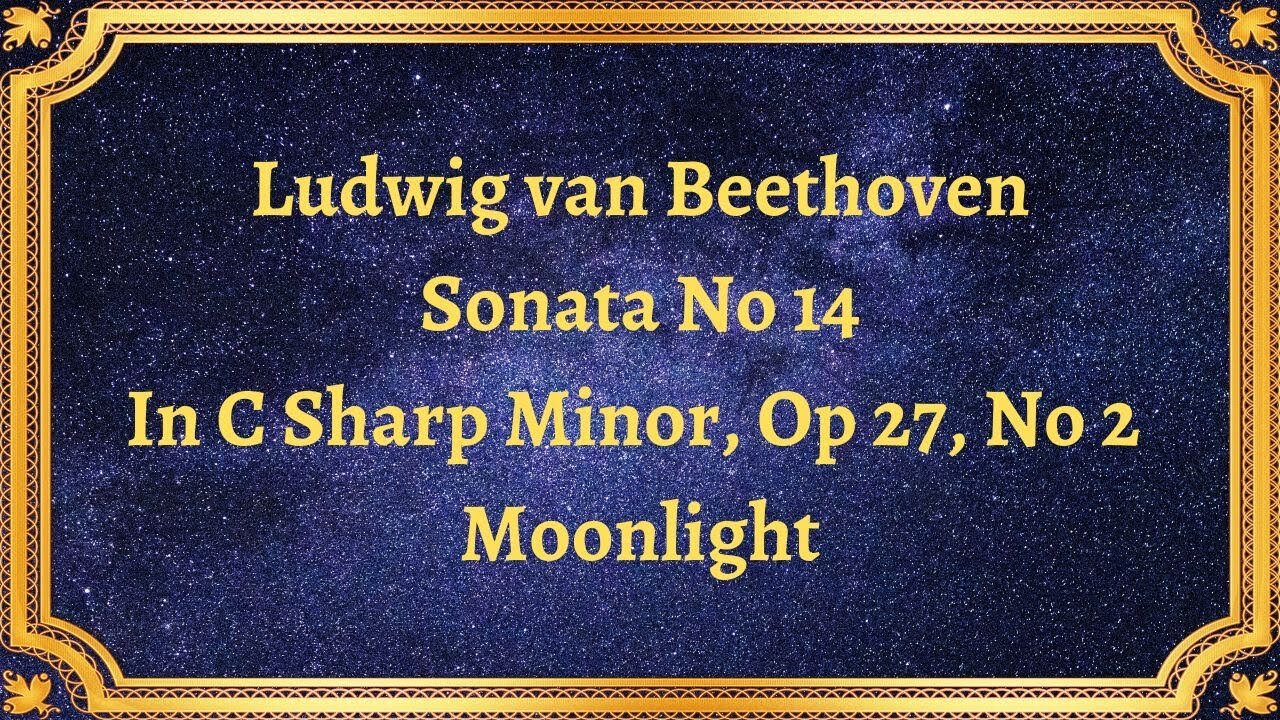Premium Only Content

Ludwig van Beethoven Sonata No 14, In C Sharp Minor, Op 27, No 2 Moonlight
#LudwigvanBeethoven #SonataNo14 #CSharpMinor #Op27No2 #MoonlightSonata #sonataform #Adagiosostenuto #Allegretto #Prestoagitato #progressivetonality #classicalmusic #middleperiod #musicaltechniques #piano #classicalorchestra #classicalcomposition #musictheory #musicalstructure.
Publication date 1950
Vladimir Horowitz Pianist
Ludwig van Beethoven's Sonata No. 14, in C Sharp Minor, Op. 27, No. 2, more commonly known as the Moonlight Sonata, has become one of the most popular and well-known works of classical music. The sonata is famous for its haunting, introspective quality, capturing the listener's attention and evoking a range of emotions.
Composed in 1801, the Moonlight Sonata is a product of Beethoven's middle period, which was marked by his increasing experimentation with form and harmony. The sonata contains three movements - Adagio sostenuto, Allegretto, and Presto agitato.
The Adagio sostenuto is the most popular and familiar movement of the sonata, with its melancholic and dream-like melody. It's characterized by its use of a slow and repetitive arpeggio in the left hand, which provides the foundation for the melody in the right hand. This creates an effect like moonlight reflecting on the surface of water, which is likely how it earned its nickname.
The Allegretto second movement is more upbeat and playful, creating a marked contrast to the previous movement. It is considered to be a "transitional" movement in the sonata, leading the listener towards the final movement's fast-paced intensity.
The Presto agitato, the final movement of the sonata, is an eruption of energy and passion, with its rapid arpeggios and aggressive staccato notes. Known as one of the most technically challenging pieces by Beethoven, it reflects the turbulence and emotion found throughout the Moonlight Sonata.
The Moonlight Sonata was groundbreaking in its time for its use of the sonata form as a musical structure, deviating from the standard model of the time by placing the slow, melancholic movement first in the score. This challenged the traditional idea of "progressive tonality," where music would start in a minor key and end in a major key. Beethoven's Moonlight Sonata deliberately breaks this pattern, providing a unique and innovative approach to the traditional sonata form.
In conclusion, Ludwig van Beethoven's Sonata No. 14, in C Sharp Minor, Op. 27, No. 2, Moonlight, is a masterful work of classical music that has stood the test of time. With its haunting melody, melancholic atmosphere, and technical intricacy, it continues to captivate and inspire listeners today.
You have the opportunity to support the channel https://destream.net/live/RadSiarAl/donate
-
 22:54
22:54
Classical music_Music Inspiration
1 month agoLudwig van Beethoven Quartet No. 6 in B-flat major, Op. 18 No. 6
612 -
 LIVE
LIVE
Nikko Ortiz
20 minutes agoYou Have A GUN?! | Rumble Live
241 watching -
 LIVE
LIVE
Benny Johnson
1 hour ago🚨Pelosi SNAPS At Question About January 6th CRIMES, PANIC Across DC as Bolton Indictment Imminent
5,581 watching -
 1:01:18
1:01:18
VINCE
2 hours agoThe Numbers Don't Lie: Trump's War on Crime Is Working | Episode 148 - 10/16/25
135K56 -
 LIVE
LIVE
LFA TV
13 hours agoLIVE & BREAKING NEWS! | THURSDAY 10/16/25
4,585 watching -
 LIVE
LIVE
Bannons War Room
7 months agoWarRoom Live
12,000 watching -
 LIVE
LIVE
Badlands Media
7 hours agoBadlands Daily: October 16, 2025
3,764 watching -
 13:44
13:44
IsaacButterfield
6 hours ago $0.17 earnedI WENT ON KILL TONY
3.86K2 -
 LIVE
LIVE
The Big Mig™
3 hours agoNever Mess With A Man’s Family, Donald J. Trump
5,211 watching -
 1:32:34
1:32:34
Dear America
3 hours agoDems Are IN SHAMBLES!!! Is NYC Electing a JIHADIST?! + FBI Cracks down on Crime!!
100K60